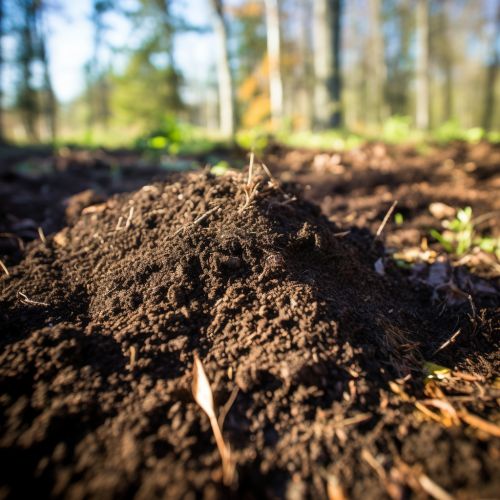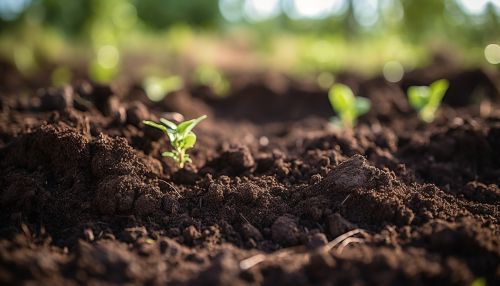Soil Organic Matter
Introduction
Soil Organic Matter (SOM) is a complex material that is a key component of soil. It is composed of a mixture of small particles of organic material that have been decomposed by microorganisms, as well as larger pieces of undecomposed plant and animal matter. SOM plays a vital role in the soil ecosystem, contributing to soil fertility, water retention, and soil structure.


Composition
The composition of SOM is highly variable, depending on the type of organic material that is present in the soil, the degree of decomposition, and the environmental conditions. It is generally composed of three main components: humus, active organic matter, and resistant organic matter.
Humus
Humus is the most stable component of SOM and is composed of complex organic compounds that are resistant to further decomposition. It is formed through the process of humification, which involves the decomposition of organic material by microorganisms. Humus contributes to soil fertility by retaining nutrients and water, and improving soil structure.
Active Organic Matter
Active organic matter, also known as the labile fraction, is composed of partially decomposed organic material and living organisms. This component of SOM is highly dynamic and is constantly being decomposed and replaced. It plays a crucial role in nutrient cycling, as it is a major source of nutrients for plants and microorganisms.
Resistant Organic Matter
Resistant organic matter, also known as the recalcitrant fraction, is composed of organic material that is resistant to decomposition. This includes materials such as lignin and suberin, which are difficult for microorganisms to break down. Despite its resistance to decomposition, this component of SOM still contributes to soil fertility by providing a slow release of nutrients.
Role in the Soil Ecosystem
SOM plays a crucial role in the soil ecosystem, contributing to soil fertility, water retention, and soil structure.
Soil Fertility
SOM is a major source of nutrients for plants and microorganisms. It contains large amounts of nitrogen, phosphorus, and sulfur, which are released into the soil as the organic matter decomposes. This process, known as mineralization, is a key component of the soil nutrient cycle.
Water Retention
SOM has a high water-holding capacity, which helps to improve the water retention of the soil. This is particularly important in sandy soils, which have a low water-holding capacity. By retaining water, SOM helps to maintain soil moisture levels, which is crucial for plant growth.
Soil Structure
SOM contributes to soil structure by binding together soil particles into aggregates. This improves the porosity of the soil, allowing for better air and water movement. Improved soil structure also reduces soil erosion and improves root penetration.
Factors Influencing SOM Levels
Several factors can influence the levels of SOM in the soil, including climate, soil type, vegetation type, and land management practices.
Climate
Climate can have a significant impact on SOM levels. In general, warmer and wetter climates promote the decomposition of organic matter, leading to lower SOM levels. Conversely, cooler and drier climates slow down decomposition, leading to higher SOM levels.
Soil Type
Soil type can also influence SOM levels. Soils with a high clay content tend to have higher SOM levels, as the clay particles protect the organic matter from decomposition. On the other hand, sandy soils tend to have lower SOM levels due to their low water-holding capacity and high permeability.
Vegetation Type
The type of vegetation can influence the quantity and quality of organic matter that is added to the soil. For example, forests tend to produce a large amount of leaf litter, which contributes to high SOM levels. Conversely, grasslands tend to produce less organic matter, leading to lower SOM levels.
Land Management Practices
Land management practices can have a significant impact on SOM levels. Practices such as crop rotation, cover cropping, and the application of organic amendments can help to increase SOM levels. Conversely, practices such as intensive tillage and monoculture can lead to a decrease in SOM levels.
Conclusion
SOM is a crucial component of the soil ecosystem, contributing to soil fertility, water retention, and soil structure. It is influenced by a variety of factors, including climate, soil type, vegetation type, and land management practices. Understanding the role and dynamics of SOM is essential for sustainable soil management and agricultural productivity.
